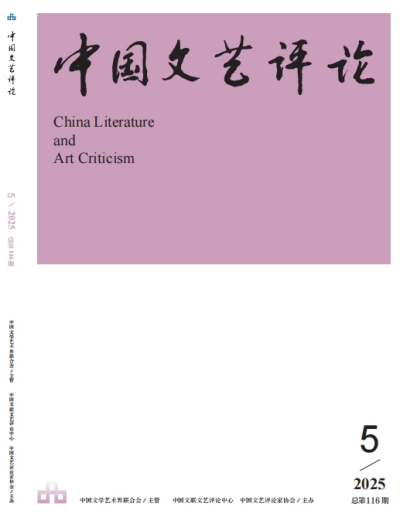
Special Topics •The Construction of Chinese Civilization Markings and Its Artistic Representation (II)
■ The Cultural Distinctiveness of Chinese New Year Paintings in Spring Festival Context (PP. 4–14)Pan Lusheng
Abstract: From an international perspective, strengthening the construction of China's narrative system and shaping cultural identifiers holds significant importance in promoting the national ethos and reinforcing cultural confidence. As the most important traditional festival in China, the Spring Festival finds its vivid cultural articulation through New Year paintings—an artistic medium that visually codifies festive spirituality. New Year paintings, serving as tangible embodiments of Spring Festival culture, encapsulate traditional customs, reflect social practices, and crystallize folk aspirations. The distinctive iconographic schemata, narrative frameworks, and chromatic symbolism employed in these paintings profoundly manifest the cultural uniqueness of the Spring Festival. The contemporary dissemination of New Year painting artistry is poised to enhance national cohesion, solidify the Chinese national community consciousness, and facilitate cross-cultural dialogue.
Keywords: Spring Festival, New Year paintings, spiritual identifiers, cultural distinctiveness
■ Freehand Brushwork as A Symbol of Chinese Civilization (PP. 15–26)Peng Feng
Abstract: Chinese civilization is extensive, profound and has a long history. Its differences between the ancient and modern times and the geographical differences among regions have brought great diversity and richness, but also made it difficult to determine the symbol. To establish the symbol of Chinese civilization, it is first necessary to choose a reference that matches it. From the perspective of the breadth and depth of civilization, the only civilization that can match Chinese civilization is the Western civilization that originated from ancient Greece. The difference between Western civilization and Chinese civilization in ontology and methodology can be summarized as that between "number" and "imagery". Among all cultural forms, art is the best embodiment of "imagery ontology" and "imagery thinking", and "freehand brushwork" is the best embodiment of artistry. "Freehand brushwork" as the symbol of Chinese civilization has been centrally embodied in Chinese art.
Keywords: imagery, freehand brushwork, art, civilization, symbol
■ The Image-Taking (Quxiang)of Fish-and-Bird: Key Artistic Signifiers in the Formative Stage of the "Symbols of Chinese Civilization"(PP.27–38)Zhang Jiemo
Abstract: The combined imagery of fish-and-bird originates from a unique mode of visual thinking characteristic of the Neolithic Age. As the birds soar into the sky and the fish leap into the deep abyss, the two seem irrelevant; then why and how did they combine into one? The act of image-taking (Quxiang) by Neolithic humans transformed these animals into a composite motif that continues to attract scholarly attention across archaeology, art history, and mythological studies. However, literary and aesthetic interpretations remain comparatively under-explored. This paper centers on fish-and-bird images found on Yangshao(from around 5000 B.C.E. to 3000 B.C.E.) red pottery, analyzing their aesthetic constructions through four interpretive models: the visual model, the mythological model, the allegorical model, and the dualistic model. The visual model confirms the intentional fusion of fish and bird in image-taking by Yangshao people and introduces a metaphysical vision of "rebirth", expanding beyond "fish and bird giving birth to each other" or "reincarnation". The mythological model, grounded in the solar cycle and the alternation of day and night, regards the fish and bird as interchangeable or identical beings—swimming and flying as two expressions of a singular ontological movement. The allegorical model, as seen in Zhuangzi's fables, completes the literary turn of image-taking by infusing it with poetic and imaginative resonance. In the Book of Songs, the motif receives classic literary articulation, while the dualistic model matures in step with landscape and pastoral poetry and regulated verse. By examining these models, the fish-and-bird imagery reveals a triadic symbolic structure: mutual generation and transformation, the sun's diurnal cycle, and the metaphysical theme of human rebirth. The image-taking of fish-and-bird elaborates an embodied, mutually transformative and nurturing metaphysical mode of life, which has become one of the earliest artistic signifiers within the symbol system for the Chinese civilization as well as a lasting archetype of Chinese narrative.
Keywords: fish-and-bird imagery, image-taking (quxiang), symbols of Chinese civilization, Neolithic Age, artistic signifier
■ The Symbol of Chinese Civilization and the Artistic Practice of China's Western Films (PP. 39–49)Zhang Ali
Abstract: China's western films originated in Xi'an, Shaanxi Province, one of the important birthplaces of Chinese civilization. As a unique expression carrier of Chinese national culture, it has participated in the construction of the image symbol system that identifies Chinese civilization with its typical geographical space narrative, cultural memory reshaping and symbols of the national spirit. The excavation and presentation of Chinese culture by China's western films has been going on throughout its 40 years of development and evolution, and has gradually settled into an artistic method that can connect tradition and modernity, region and center. The symbol of Chinese civilization in China's western films is not only directly related to the ideological positioning of the film and aggregates the image signifiers of the film, but also significantly constitutes the style symbol of the genre. Its practical methods in films have helped to form a unique representation of the cultural spirit of Chinese film. In the cultural journey of the great rejuvenation of the Chinese nation in the New Era, the re-exploration, presentation, interpretation and dissemination of the symbols of Chinese civilization by China's western films have important practical value and far-reaching significance for shaping national cultural identity.
Keywords: symbol of Chinese civilization, China’s western film, national cultural identity, artistic presentation
■ The Presentation Form, Logical Premise and Aesthetic Expression of Chinese Civilization Symbols in Art from Multiple Ethnic Groups (PP. 50–63)Zou Zan
Abstract: The symbol of Chinese civilization is a symbol system with "great unity" as the core, while reflecting the inherent richness and diversity of "unity". Art from multiple ethnic groups is an important carrier that contains, presents and disseminates the symbols of Chinese civilization. The representation mechanism of the symbol of Chinese civilization in art from multiple ethnic groups has four logical premises: "two combinations" provide theoretical guidance and fundamental compliance; "the pattern of pluralistic unity of the Chinese nation" is a historical condition; the extensive interaction, comprehensive exchanges and in-depth integration of various ethnic groups provide practical experience; and the people-oriented and popular literary and artistic creation has become both a reality-driven approach and a textual foundation. As a unique spiritual symbol of the Chinese nation, the sense of community for the Chinese nation is the endogenous driving force and logical main line for promoting the development of art from multiple ethnic groups. Through the genealogical construction of symbolic identification and by drawing on the "integrative" aesthetic concept of "shared beauty, harmonious coexistence", an important foundation is provided for presenting a trustworthy, lovable, and respectable image of China.
Keywords: symbol of Chinese civilization, art from multiple ethnic groups, sense of community for the Chinese nation, integrative aesthetics
Theoretical Explorations
■ Traditional Chinese Music in the Context of Chinese Traditional Culture and Chinese Aesthetic (PP. 64–77)Wang Cizhao
Abstract: An art form is inevitably inseparable from the cultural soil on which it depends and the cultural concepts related to it. The musical art of a region is also dependent on the cultural environment of the region. The fundamental reason why Chinese culture has a long history and has continued to this day without losing its essence lies in its unity and continuity. Traditional Chinese music also reflects this feature: unified musical concepts, convergent musical forms and programmed expressions, as well as continuity of the concept of music and education, musical forms with powerful vitality and the inheritance of musical thinking. The spirit of Chinese aesthetics runs through the confrontation and integration of the thoughts of Confucianism and Taoism. The Confucian aesthetic concept of the unity of beauty and goodness and the Taoist aesthetic taste of the mutual resonance of emotion and scenery have prompted traditional Chinese music to form a unique way of thinking and form of expression: a musical system dominated by vocal music, instrumental expression through symbolism and metaphors, a structure lacking functionality and a system of multi-purpose use of one piece of music, as well as themes that advocate nature, instrumental performances with monologues and self-entertainment, "empty" artistic conceptions and "implicit" expressions. This way of thinking and form of expression permeate all fields of traditional Chinese music and has become the essence of Chinese music, which has always maintained a strong vitality in the thousands of years of history of Chinese music development and has become an important part of traditional Chinese culture.
Keywords: unity, continuity, humanistic spirit, unity of beauty and goodness, mutual resonance of emotion and scenery
Art Beyond China
■ Fenollosa and the Landscape Aesthetics of the Tang and Song Dynasties (PP. 78–88)Lu Yang
Abstract: Ernest Francisco Fenollosa was a famous Orientalist in the second half of the 19th century. Although he did not study Chinese well, his works had a groundbreaking influence in introducing Chinese characters and Chinese and Japanese art to the Western world. Fenollosa regarded "idea" as the highest realm of painting and believed that Eastern painting was superior to Western painting. His Epochs of Chinese and Japanese Arts is the first art history of East Asia written by a Western scholar. Citing landscape paintings of the Tang and Song dynasties as the highest achievements of Chinese landscape painting, and taking Guo Xi's "Linquan Gaozhi" as one of the greatest contributions of Chinese painting theory to the world, Fenollosa admired the brilliance of ancient Chinese and Western art and lamented the decline of art in his time. It can be said that he wrote another romantic mirror image of the East that is different from the discourse of "Orientalism".
Keywords: Fenollosa, idea, explanation of the truth of art, landscape painting, Wang Wei, Guo Xi
Youth Criticism
■ The Subjectivity Status of Artificial Intelligence in Film and Its Aesthetic Critique (PP. 89–101)Xu Jie
Abstract: OpenAI's text-to-video model Sora has revolutionized the current movie situation, and movie creators have been split into three artistic subjects: "limited writer", "artificial intelligence" and "director". The first is the "writing film" centered on the language writer, whose creative method has changed from "shooting" to "writing", and the subject as a limited writer is alienated as the poetic language subjugates the technical language. The second is the "automatic film" centered on artificial intelligence, whose creative method has changed from "shooting" to "generating", and the subject is erased in the intertextuality of images. The movie goes from heterogeneous aesthetics to smooth aesthetics. The third type is the director-author-centered "shooting film", in which film creation still maintains the traditional mode of "filming and production", and the spirit of the human subject is confirmed and sustained in the process, emotion and intuition of film creation.
Keywords: Sora, writing cinema, limited writer, automatic cinema, intelligent subject, human subject
Preface, Postscript and Book Review
■ On the Construction of Modern Cultural Subjectivity and Related Issues in Cross-cultural Interpretation: A Dialogue with Cross-Cultural Aesthetics of Art(PP. 102–112)Xia Bo
Abstract: With the interpretation of Li Qingben's Cross-cultural Aesthetics of Art, this essay stresses the cultural theoretical value of the book as it looks at the development of human cultures from a cross-cultural perspective based on the relationship among different cultures in the world, which serves to construct modern cultural subjectivity in the context of knowing the self and others on the ground of "universal pluralism". In addition, it also sheds light on relevant issues such as "origin and ontology", "terminology and discourse", the definition of comparative literature, language characteristics and Eastern and Western literature, and the dilemmas faced by human culture at present and in the future.
Keywords: Cross-cultural Aesthetics of Art,modern cultural subjectivity, origin and ontology, terminology and discourse, comparative literature, dilemma faced by human culture
Interview with Renowned Experts
■ Theoretical Research Promotes the Development of Suzhou Pingtan: An Interview with the Pingtan Theorist Zhou Liang(PP. 113–123)Interviewed by Zhu Donglin
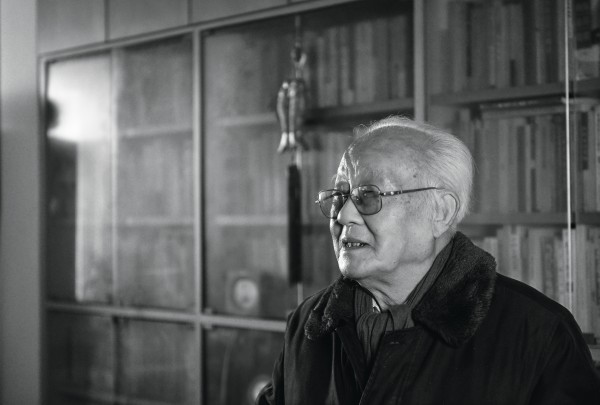
Inside Front Cover
Chinese Literary Critics: Xing Jianchang

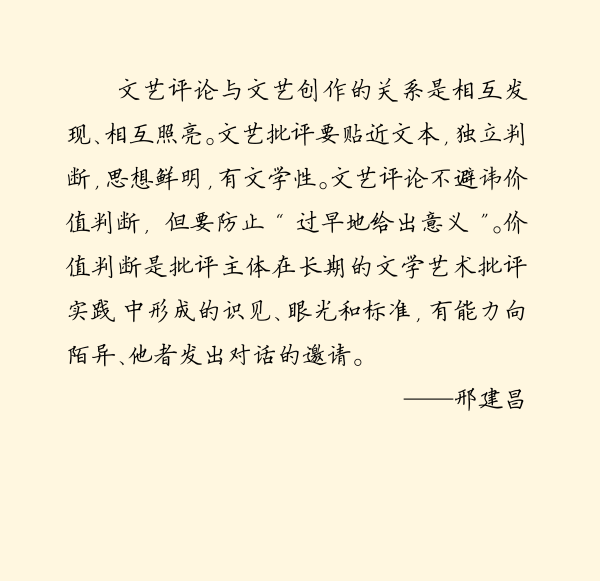
Inside Back Cover
Recommendation of Important Academic Organizations in Literary and Art Theory and Criticism:China Association for Literary Criticism
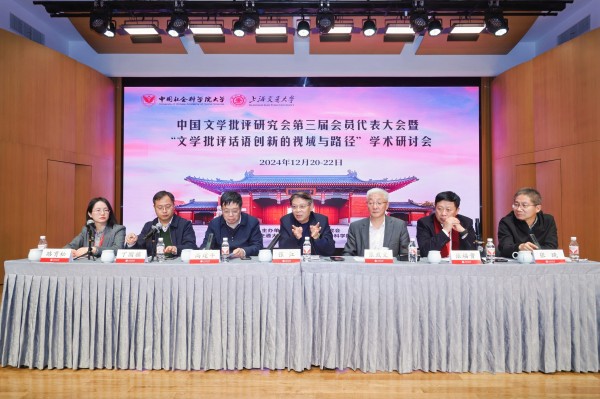
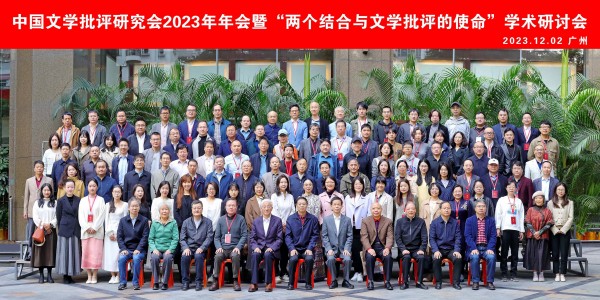
Back Cover
Poster for the 5thNational Training Program for Key New Media Professionals in Literary and Art Criticism
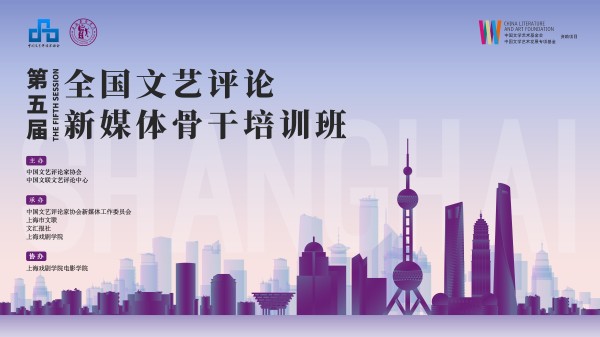
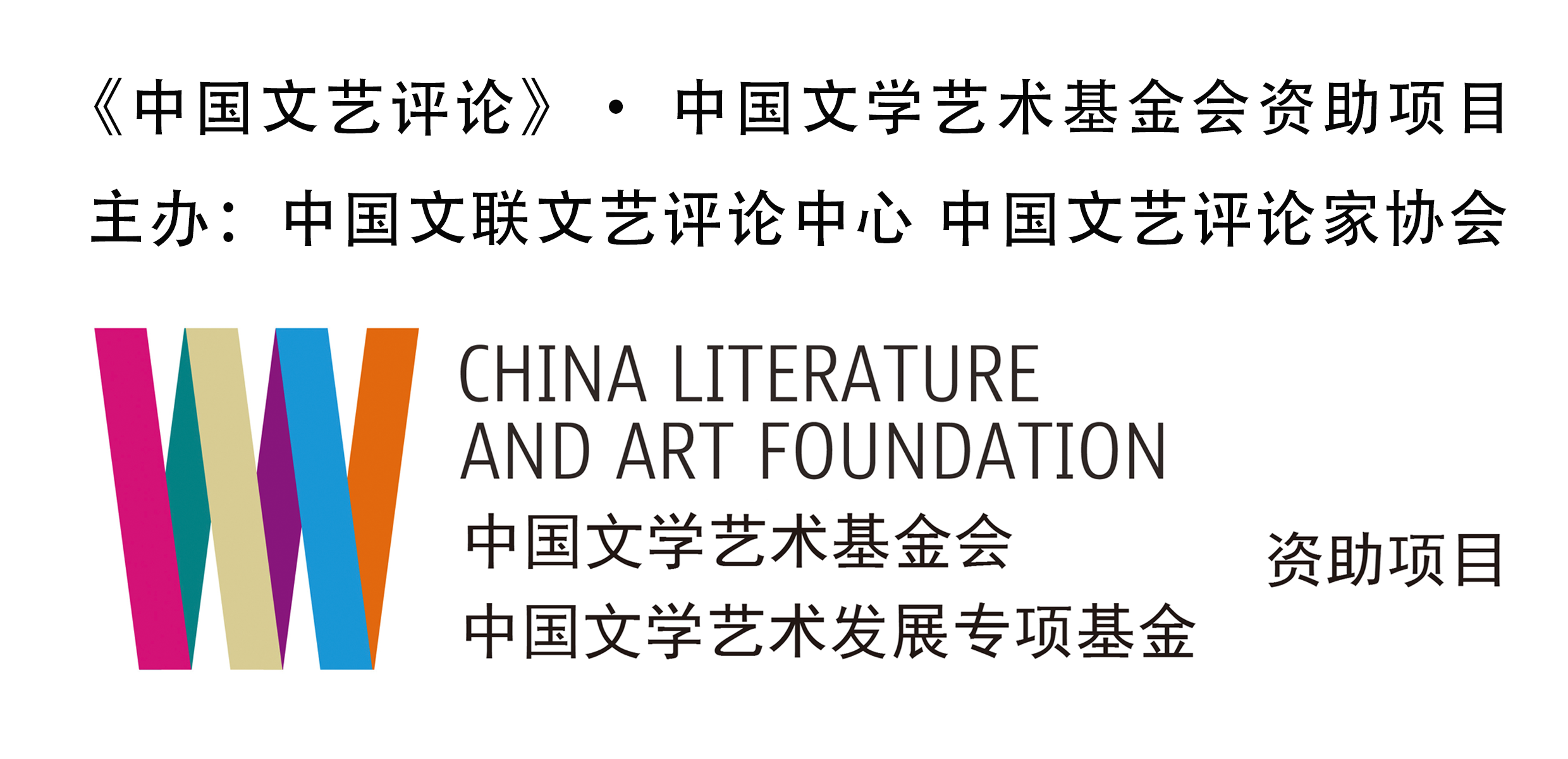

中国文艺评论网

“中国文艺评论”微信公号

“中国文艺评论”视频号